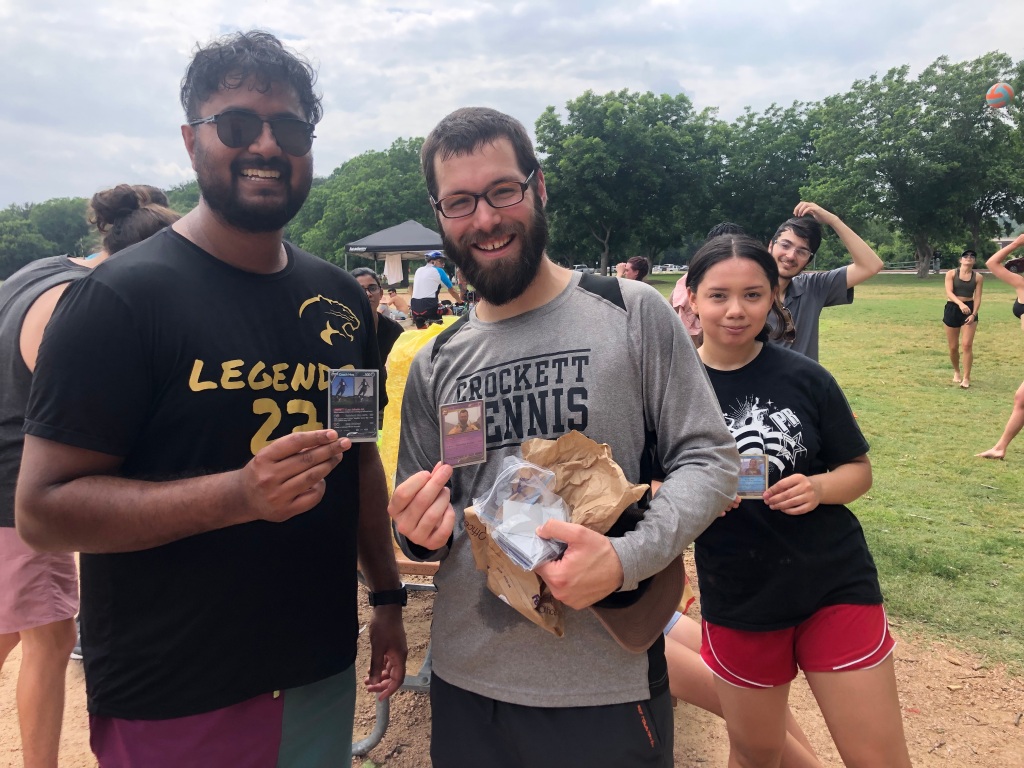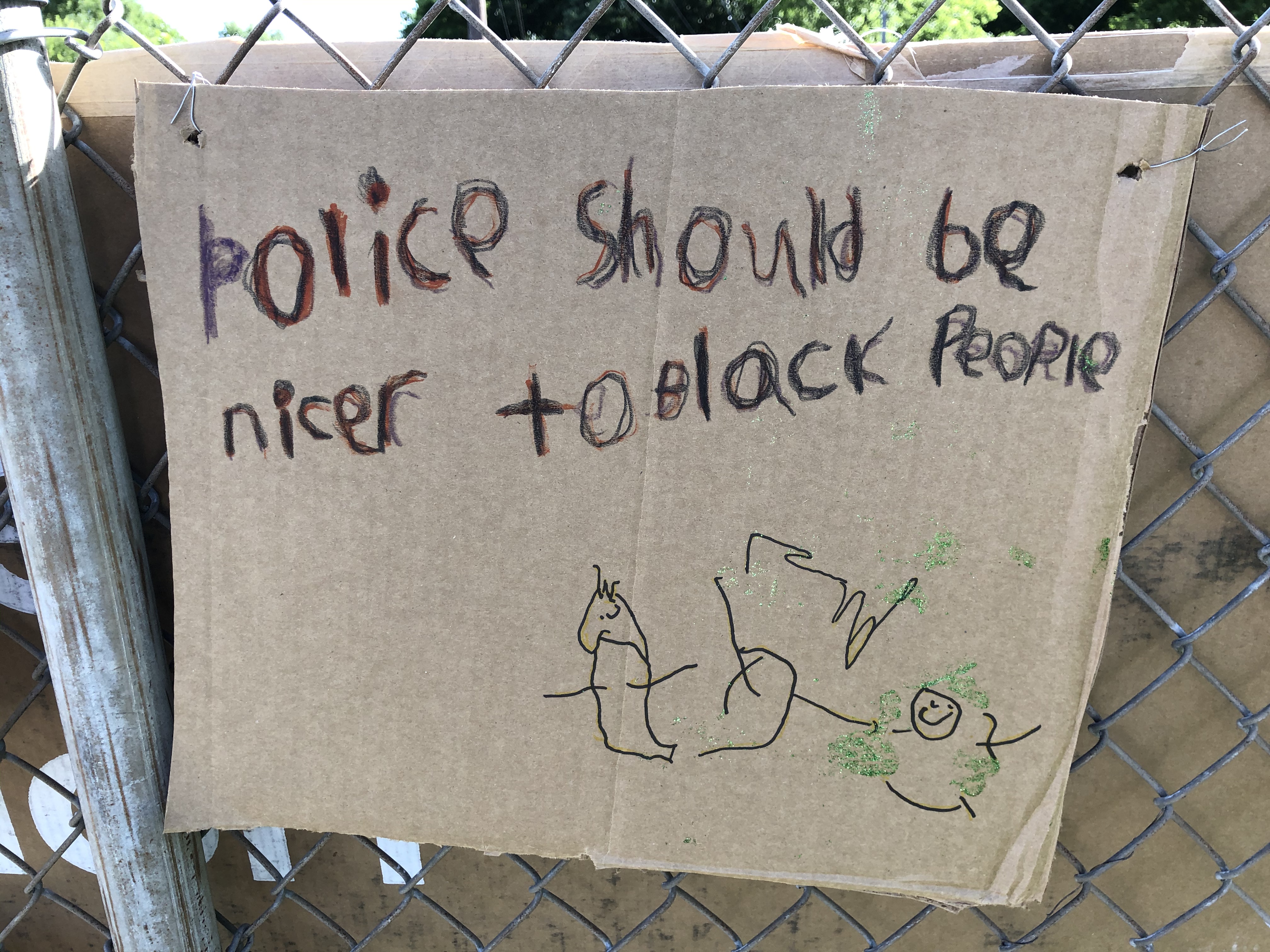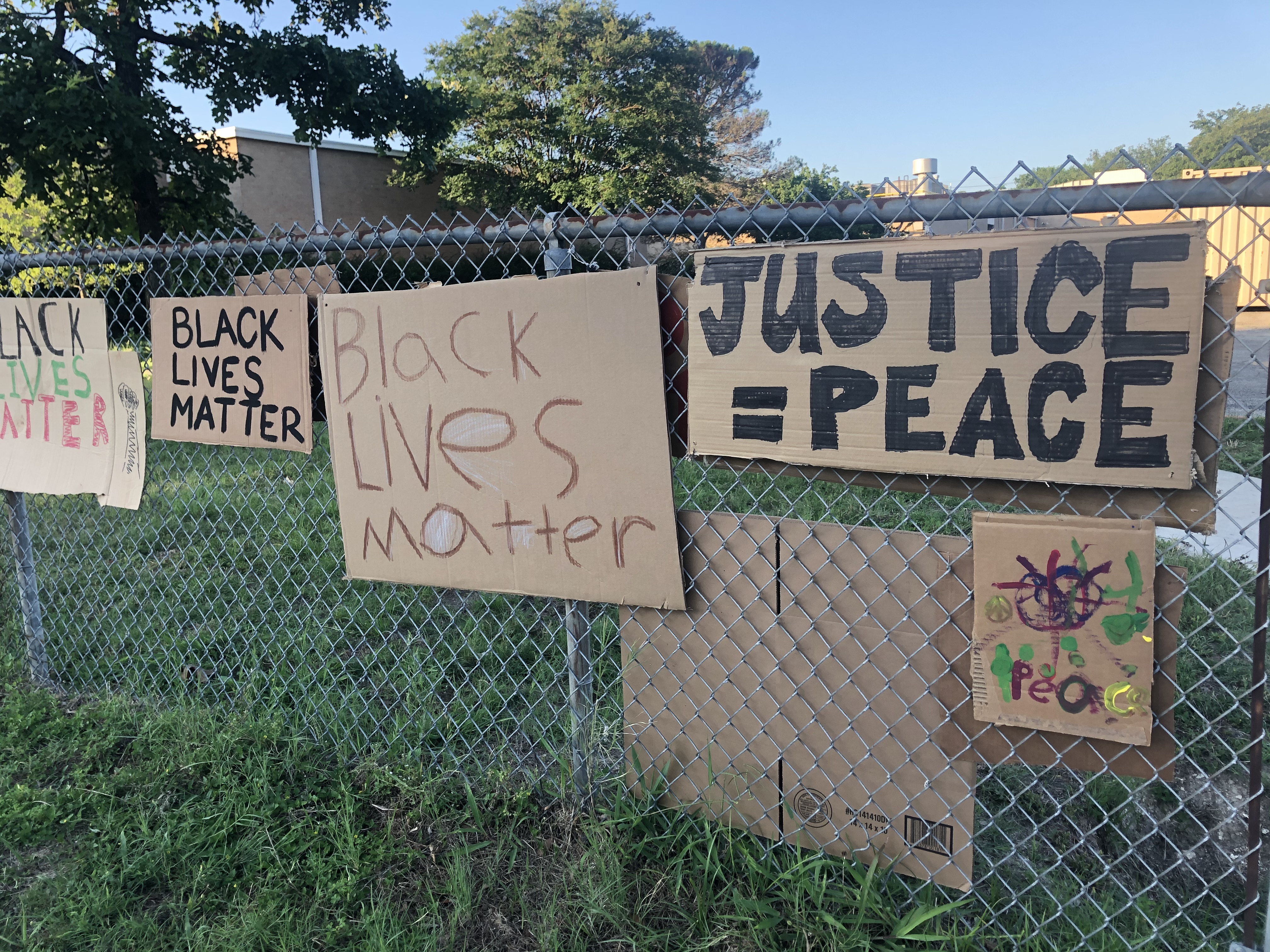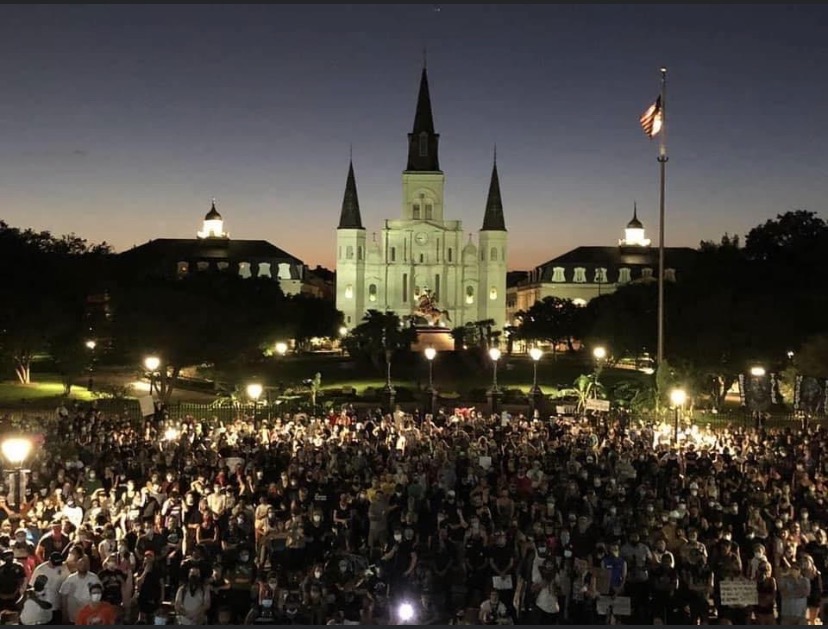You can't make this s*!# up.

Last night I rewatched Kelly Reickart’s movie Showing Up. Focusing on two artists preparing for their upcoming shows in a northwestern town, the narrative follows both friend and family drama. As Lizzy creates colorful ceramic girls, Jo works with textiles and string to design installments that towered around and above observers. Poetic scenes of other artists working at the local art school are interspersed with the two main characters who live next door to each other and clash over plumbing problems and the care of a pigeon with a broken wing. With the art world as its backdrop, the film has Lizzy and Jo support each other in different ways. From appreciating each other’s work to sharing the care of the pigeon, they show up.
On a sunny day in late May, I watched my son play volleyball in Zilker Park with the high school tennis team he coaches – an end-of-the-year celebration for his students. I sat at a picnic table loaded with cupcakes covered in red, white, and blue frosting, platters of cut-up fruit, bags of chips, gallons of water and Hawaiian punch, two boxes of mango popsicles and a five-foot tall plastic bag of popcorn from the movie theater where one of the teens worked. The sun came in and out behind gray clouds that contemplated rain. After energetic volleyball games where the players got covered in sand, sweat, and good cheer, the teens joined me at the picnic table to eat the melting popsicles and cupcakes.
Showing up is a true sign of love. I go to weddings, funerals, birthdays, and graduations not for the cake or prayers or confetti but to show support for those I love during life’s joyful and sorrowful times.
Evan made a speech about the team’s accomplishments before explaining he and his co-coach’s version of participation awards: individualized Pokemon cards for each student! They had designed these laminated cards with the Pokemon logo on one side and a photo of the student with his/her Pokemon stats on the other. Kids had names like “Warrior Doubles Player” and “Sassy Server.” A tall senior told Evan the card was the best school “award” he’d ever received.
I had not been looking forward to hanging outside that sweltering afternoon, but I loved watching my son’s tennis players celebrate with each other. Showing up might start out as a chore, yet the people I show up for always make me realize I made the right decision.

When my youngest sister died suddenly in 2004, the ordeal became a blur of nightmares that left me gulping for air as my family planned for the saddest day of our lives. Except for the Sam Cooke recording of “I Am a Pilgrim” that Gayle convinced a priest to allow us to play as we exited the church, the funeral mass and home visitation stuff felt robotic, cold. Later when mourners filled Grandma’s house and spilled out onto the front porch and backyard, I remember seeing people who surprised me with their presence. So many from New Orleans and other cities Kelly had left her mark on showed up in our small hometown. Gayle’s closest friend flew in from California, and when I said to him, “Danny, I can’t believe you came all this way,” he told me, “Gayle would do the same for me.” Most of that day’s memories are hazy, but I do remember seeing Steve, Kelly’s former boyfriend who was as sweet and calm as he was creative and handsome. He gave me a smile that for a second made me feel safe.

In 2009 after my middle son had a horrendous accident that required a six-week stay in the hospital, my Sittin’ Ugly Sistahs showed up in the ICU waiting room. Throughout Casey’s painful weeks filled with countless surgeries, I sat by his bedside. Friends dropped off food and gave me comfort. Gayle arranged for our immediate family to come to Austin to celebrate Christmas that December while Casey was still hospitalized.

Years later, family and friends braved the Texas heat to attend Casey’s outdoor wedding after COVID had cancelled their first choice for a November marriage. Gayle and Kelly’s best friend Mark flew in early to help with the rehearsal supper and the big day’s set-up of tables and decorations. Around midnight as we loaded our cars with wedding gifts and dirty tablecloths, Gayle told me, “I’m glad I came for Casey’s wedding, but this shit was hard!” Despite the scorching temperatures and stressful work, she and Mark had showed up.

Last June Gayle’s husband died from systemic heart disease. I got a one way ticket to New York as soon as I could. Our nephew Ryan and his wife Kelly flew into New Jersey for the funeral. Friends from out-of-state came up as well. Of course, Danny was there. I stayed two weeks and helped Gayle as best I could as a steady flow of friends and work associates showed up.

When death happens, we can be at a loss: “I don’t know what to say.” We don’t have to say anything. Just show up and give the grieving person a hug, a sad smile, a nod, a box of brownies. Taking the time to drive, fly, or walk there means more than we know. Showing up announces, “I care about you.” Even if we can’t ease their suffering, showing up helps the ones with the holes in their hearts, the fog in their brains, and the confusion in their souls. Sharing sadness is not as easy as bringing presents or making champagne toasts, but showing up matters to those we show up for. Only in-person can we give someone a hug that will last longer than a card or a text message. Messages and gifts might mean we’re thinking of those we care about, but showing up means we’d risk highway driving or airport stress to be in the room where life is happening. We show up.











